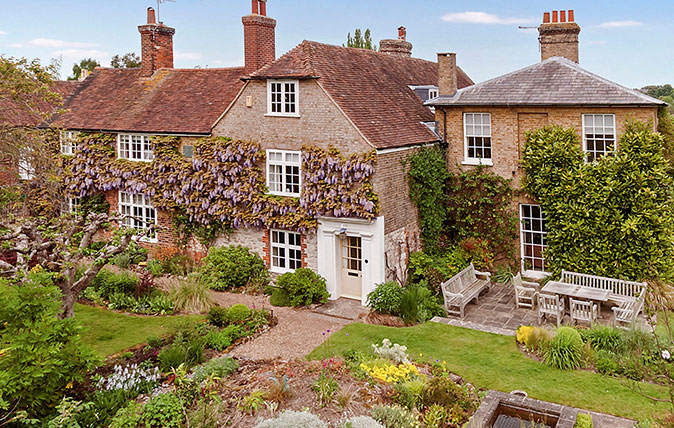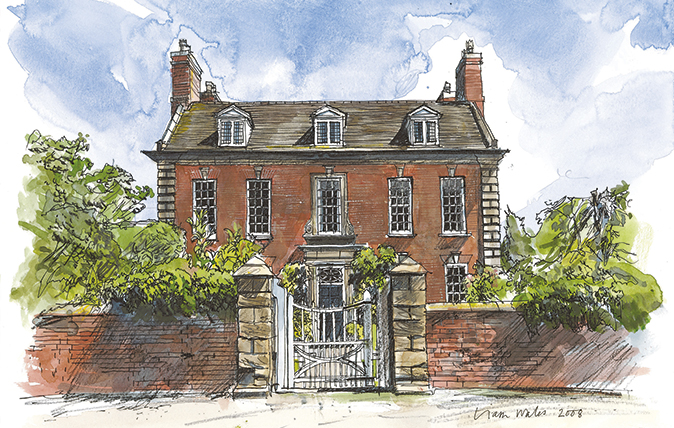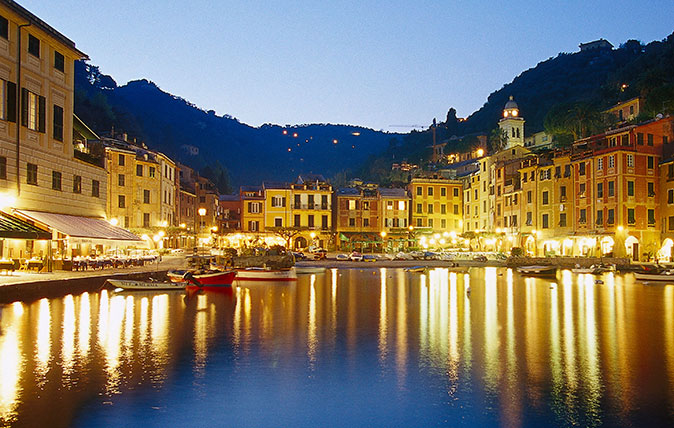The five village property names that always command a premium
What's in a name?


The English-village idyll is very much alive and buyers are willing to pay above the odds for it, but have you ever wondered exactly how much that ‘manor’, ‘rectory’ or ‘cottage’ label is worth? We investigate the difference an evocative name makes, with exclusive research from Jackson-Stops & Staff.
The manor house

Average sale price £1,427,292 | 650% more than UK average | £190 per sq ft
To the manor born or bought, this is one of the most desirable houses in the village. It’s typically the largest, too, and a great place for both a party and some peace and quiet. Bizarrely, despite being the most expensive (and rightly so) of village properties, the manor house consistently offers the best value per square foot.
‘Manor houses enjoy glamour and prestige as the focal point of village life, with spacious living accommodation matched by perfectly manicured grounds,’ says Nick Leeming, chairman of Jackson-Stops & Staff. ‘As a result, they continue to boast a healthy premium on the village-property stage and will do so for years to come.’
The old rectory

Average sale price £1,295,733 | 590% more than UK average | £292 per sq ft
Second to those in ‘the big house’, the vicar was historically the most important person in the village, so it’s only fitting that he and his family enjoyed a property of ample proportions and in a pivotal spot in the heart of things, benefiting from a lush garden, a nearby pub, a shop and perhaps the local school. All of this makes a parsonage pretty close to perfect.
‘Sometimes, all it takes is a name to spark interest,’ says Brian Bishop, Jackson-Stops & Staff director. ‘Properties called The Old Rectory draw interest from the get-go.’
The farmhouse

Average sale price £1,257,918 | 580% more than UK average | £312 per sq ft
With fields and outbuildings to explore and ‘bundles of space’, farms are particularly suited to family life. They’re usually on the edge of a village, where it’s nice and quiet, and their rambling, extensive nature is the crux of their appeal, making them almost six times more expensive than the average UK home.
‘You often find that adults who spent their childhood on a farm will make the move back,’ says Gavin Selbie of the Tunbridge Wells branch.
Exquisite houses, the beauty of Nature, and how to get the most from your life, straight to your inbox.
‘This is particularly apparent with young couples ready to start a family of their own and wanting to relive these memories with their children.’
The barn conversion

Average sale price £889,925 | 410% more than UK average | £325 per sq ft
Whether buyers are downsizing in later life or moving out of town to start a family, barn conversions are top of the charts on a price-per-square-foot basis, despite being much less expensive than manor houses, parsonages and farms. They tend to be light-filled and spacious and are popular for their blend of traditional and modern style.
‘Barns are a blank canvas that can be transformed into the buyer’s ideal home quite easily,’ says Tim Hayward, director of the Burnham Market branch.
‘It’s very rare that a converted barn is on the market for long. Last April, we marketed four on the Holkham estate and, just four days after the open day, all four sales had been agreed.’
The cottage

Average sale price £607,465 | 280% more than UK average | £320 per sq ft
Whether thatched, wisteria-covered or adorably crooked, the country cottage’s popularity foretells its average square-foot price of £320, second only to the barn conversion and considerably higher than the much grander manor house. However, although 2.8 times above the cost of the average UK home, the country cottage is the least expensive of English village homes and, often, the most desirable.
‘Cottages are an iconic part of British housing stock,’ says Dawn Carritt, director of country houses at Jackson-Stops & Staff. ‘In fact, many of the features that would often be negatives in another property, such as smaller rooms or low head heights and beams, are the most attractive parts of a cottage. They also suit a variety of needs, from making great second homes for families seeking weekend escapes or an attractive option for downsizing retirees.’
What about the rest?

Church conversions, post offices, butchers and old schoolhouses are a little more rare than our top five, but still worth thinking about. Last year, a church conversion marketed by Jackson-Stops & Staff sold for 107% more than the area’s average house price. An old post office also recently attracted a hefty premium, selling at 15% more than the average.
‘Many buyers crave classic English village life and historical properties, whether old rectories and farmhouses, or the more unusual conversions, are always attractive,’ says Liz McLean, director of the Newbury branch. ‘Although some do want a ready-to-move-in-to home, many are looking for a project — a home with character on which to make their mark. In both cases, and across all village property types, demand is much higher than average.’

Credit: Liam Wales/COUNTRY LIFE Picture Library
More tea, vicar? The persistent appeal of the parsonage
Dearly beloved, the parsonage’s appeal never falters, finds Eleanor Doughty.

Credit: Alamy
The 10 most beautiful marinas in Europe, from Scotland to Sardinia
With their beautiful locations and state-of-the-art facilities, these exclusive marinas offer the best for yacht owners and sailing enthusiasts.

Top 10 places to buy property in France
Variety is the spice of life in France, with its cornucopia of landscapes and lifestyles open to property buyers.
Annunciata is director of contemporary art gallery TIN MAN ART and an award-winning journalist specialising in art, culture and property. Previously, she was Country Life’s News & Property Editor. Before that, she worked at The Sunday Times Travel Magazine, researched for a historical biographer and co-founded a literary, art and music festival in Oxfordshire. Lancashire-born, she lives in Hampshire with a husband, two daughters and a mischievous pug.

